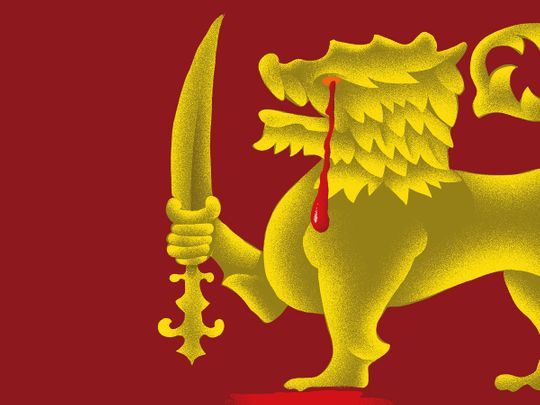
The series of suicide attacks on churches and hotels in Sri Lanka on Easter Sunday, which has left nearly 300 dead and hundreds injured, are more than just a national or religious tragedy. For members of the Sri Lankan diaspora, including Catholics like me, who have family connections to the very places and parishes that were attacked, the country’s tribulations are no longer terrible, local and hard to explain to people unfamiliar with its unsettled history. Now they are terrible, local — and familiar.
Much of the world knows the outlines of Sri Lanka’s historic troubles — a three-decade civil war, fought along ethnic lines and punctuated by hundreds of suicide bombings carried out by the Tamil Tiger terrorist organisation. But broad international interest in the island nation, and familiarity with its struggles, has largely been confined to the story of its civil war, which ended in 2009, and, at most, to ongoing, uneven reconciliations and renewals that have played out since then.
Now a new, shared context has emerged. The attackers knew their targets well, and seem to have chosen them for maximum symbolic value. St Anthony’s, in the capital city of Colombo, is a national shrine, whose turn-of-the-19th-century origins are associated with the persecution of local Catholics by the country’s then-colonial Dutch rulers.
It has long been a place frequented by travellers — domestic and foreign, Catholic and non-Catholic — before they begin journeys around the island. On my last family trip to Sri Lanka, with four overtired, overheating children in the back seat, our driver took a maddeningly inefficient route out of the traffic-clogged big city just so he could first pray for the intercession of St Anthony for a safe trip.
The second prominent church that was attacked, St Sebastian’s, is in my mother’s place of birth, Negombo, a stout fishing town north of the capital. Negombo is nicknamed “Little Rome” because of its robust Catholic culture, which dates to 16th-century Portuguese colonialism. Every January St Sebastian’s plays host to an island-famous festival in honour of its namesake saint. Days and nights of prayer, procession and merrymaking are enjoyed by churchgoers alongside friends and neighbours.
Symbol of pluralism
Significantly, this was true before, during and after the civil war. I noted as much to a cousin and her husband a few years ago, after I visited the church and attended the festival with them and their children. They cited this as evidence of the country’s baseline religious pluralism, which I appreciated as a source of strong and meaningful contrast to its deep-cutting ethnic divisions. Will that still be the case at next year’s Feast of St Sebastian?
That depends on what these attacks portend — whether the global currents of religiously inspired terrorism overwhelm the island’s long-standing experience with pluralism.
Befitting an island long at the centre of global trade routes, Sri Lanka has for centuries been home to a diversity of faiths. Buddhism is intimately connected to Sri Lanka’s origin narratives, dating from at least 100 BC; Hinduism arrived definitively a few centuries later. Muslims have been in Sri Lanka since the Middle Ages, by way of the island’s commerce with the Arab world; and Christians have been there since at least the beginning of European colonialism in the 16th century.
These religions have not always lived in harmony, but such conflicts have generally been the exception, as peoples of different faiths, at least when it comes to faith itself, have generally figured out ways to live together in the distinctive shared space and comparative isolation of a small island country in the Indian Ocean.
That isolation is suddenly, undeniably gone. News reports about the recent attacks suggest that Sri Lankan authorities had already been monitoring local Islamist groups, which they suspected were plotting attacks on Catholic churches, who were no doubt inspired by global currents and conflicts situated far beyond the island’s shores. At the same time, as the world responds, leaders from Pope Francis to President Trump have condemned the suicide bombings of churches and hotels in words and ways that are immediately familiar.
I wonder how these messages of sympathy and explanation are being received and felt by Sri Lankans. Suicide bombings are terribly familiar, after a decade-long break. They must wonder if anyone cares about the fraught efforts at political and economic renewal that have come in between, not to mention a necessarily imperfect but undeniably durable model of pluralist religious cohabitation.
Sympathy for Sri Lanka is not for what the island has lost. Rather, it is for what Sri Lanka has gained — membership in a global conflict that is at once fresh and familiar, for the island and for the world.
— New York Times
Randy Boyagoda is a novelist and professor of English at the University of Toronto, where he is also principal of St. Michael’s College.











